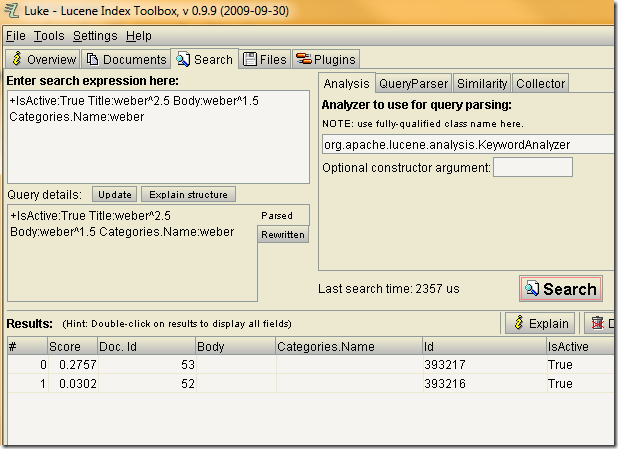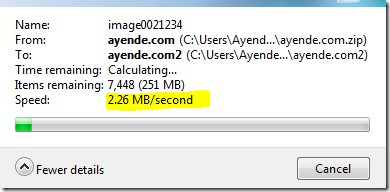My previous post relating to the business side of software seems to have met with positive reception, so here is another one. Let me know if you like it, or if you are interested in tech only content.
My father told me the secret for getting rich when I was just a little boy. It goes like this:
Unfortunately, I think that the .COM bubble made it clear that two yuppies in the living room don’t really add value that would make people buy from them.
So another strategy is needed.
One of the nicest past times is day dreaming.
Here are a couple of nice dreams of getting rich quick:
If I make this widget, I can sell it for 50$. It is going to cost me 15,000$ to write it, but then every sell is practically free. I only need 300 sales to start earning money! If I sell just a 1,000 of them, I am going to earn 35,000$, and I can keep selling it forever.
It is like Manna from Heaven!
Or this one, which should be more familiar to anyone who isn’t in software:
I can go to the bank and get a mortgage on this house, they will cover 90% of the cost, so I only need to bring 15,000$ to get it. I pay 15,000$ and I have a 150,000$ assets in my hands. Mortgage payments is only 1,000$ a month for 15 years.
I can rent it for 1,500$, so the house covers the mortgage and I get 500$ a month for doing nothing. In 2.5 years, I get my original 15,000$ back, I still have the house, which is going to be worth 175,000$. I can sell it then and make 35,000$ profit!
It is like Manna from Heaven!
Now, I think that you can agree with me that those are pretty common thought patterns for people. They are also true. Think about it, wouldn’t you want to make 200% – 300% profit in a short amount of time?
Both schemes are valid ways to do so. Well, sort of.
The problem with the two schemes outlined above is that they have (in technical terms), absolutely no error handling. In fact, people paint the picture in terms so rosy that I suffer from pink overload.
Generally speaking, there are few things that hold true in business as well as this statement:
The higher the return on investment, the higher the risk.
With the real estate example, let us say that you have a month in which you have no renters, can you pay the mortgage? Out of your own pocket, that is. If not, you are likely to start spiraling down. And if you can pay the mortgage, can you pay city tax? What happen when you have a renter that is there, but doesn’t pay? You got legal costs to evict them.
And that is completely ignoring something like the current recession.
Just to give you some idea, you bought the house, rented it, and on the third month, the renter stopped paying rent and refuse to leave. It is going to take 30 days to evict them, and another 2 weeks to get a new renter. Your out of pocket expenses are going to be 2,000$ for the mortgage (for the two months in took to resolve things), another 1,500$ for the legal fees and probably at least two bottle of anti acid for your ulcer.
Oh, you might be able to recover some of the costs if you go after the renters (add more legal fees), but that assumes that they are able to pay, and the money is only going to show up sometimes in the future (if at all). In the meantime, you have better be able to cover the unexpected 3,500$ expense that just dropped in your lap.
With software, let us say that you quit your job to work on your widget. You spent a lot of time & effort on that, then you start selling it. In the first three months, 50 people buy it. Your underlying assumption about the number of buyers was overly optimistic. You are out of a job, out 12,500$ and feeling cheated.
Where it the Manna from Heaven?!
One of the things that I like about being in the army is that it thought me to plan. I can write an pretty good op plan, and that is close enough to a business plan. Most op plans have standard sections:
- Goal
- Mission
- Our forces
- Enemy forces
- Obstacles
- Dangers
- Contingency plans
- Abort
Whenever you are going to plan something big, you have to sit down and plan for the things that are going to bite you in the ass. I generally try to divide things into two categories. Contingency plans are for when the situation is recoverable. Abort is for when it isn’t, and I want to get out with as little damage as possible.
With software, that means that you have things like user studies, betas, etc. With real estate, I am not an expert so I am not going to comment. I would say that not getting in over your head is a good plan no matter what.
Final thoughts, figure out what your exit strategy is before you go in.
Figure out the cost of that exit strategy along with the cost of entering the game in the first place. That is the amount of money that you are putting on the table. And another final word of advice, that money is at risk, and the higher the return, the higher the risk. If you want to sleep well at night, make sure that you aren’t risking the money that you need to buy bread.




















